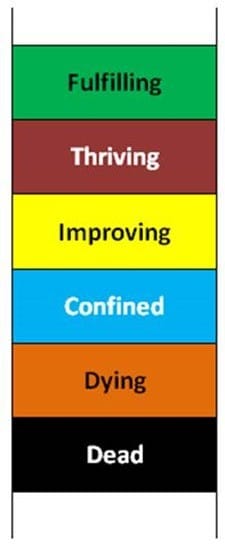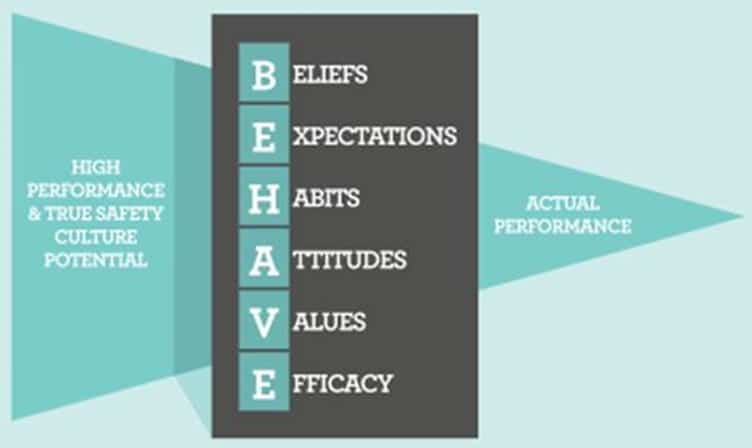Originally posted on April 25, 2015 @ 6:59 PM
Building High Performance Safety Cultures (More than ‘the way we do things around here’)
What is a Safety Culture?
First published here: http://safetyma.myob.net/news/building-high-performance-safety-cultures/162354
If you ask most business leaders to describe their company’s safety culture, they will often say ‘ it’s the way we do things around here’. However, if you take a closer look at the words ‘the way we do things around here’, you will realise that it describes the delivery of the process (the way) and omits vital other aspects in order to sustain an effective safety culture. In doing so the vision of the message fails to reveal the true essence of the safety culture that makes it the way it is
Instead, we recommend you include the following additional aspects in your description – who, where and why.’ When we describe a safety culture as ‘the way, who, where and why we do things around here,’ we encompass not only the obvious, observable aspects of the business, but the reason why it is important and how the people are living it. To ignore the ‘who, where and why’ parts of a safety culture, we achieve only a partial understanding of the complexities of culture and fail to align it with people’s inner personal values
A safety culture which captures the ‘way, who, where and why we do things around here,’ is a powerful, meaningful and motivating statement which is far more likely to engage employees in their given daily routines with everything they have to offer
So if the way is the process to gain a safety culture let’s look at the who, where and why aspects which creates the vision of what a true safety culture is about
The ‘who’ part of a safety culture are the people that create and support the culture (whether it’s good or bad) on a daily basis. The ‘who’ can be two people, an organisation or even an entire community
The ‘where’ part of a safety culture focuses on the area where the culture applies. This could be in a office, on a building site, within the whole organisation or across several communities or regions
The ‘why’ aspect of a safety culture is probably the most important because it signals why it’s important and should relate not only to the company’s core vision but to every individual that serves it. The ‘why’ starts with core beliefs and builds on values and attitudes to form the desired expectation of the safety culture and its efficacy
Why has Apple remained the number 1 company in the cell phone market? Because their mission statement is so simple and profound, in that they endeavour to change the status quo. How do they achieve this, by making beautiful and simple to use products. Why, because people don’t buy what they do, they buy why they do it.
To provide a true and just safety culture it is therefore essential the company’s vision combines the ‘way, who, where and why into a mission statement (charter) that is understood, owned and shared by the people who live it
The next time you read your company’s safety mission statement, see if the intent is to serve others or its community, or if it is oriented more to the organisation’s own success. Any statement that has wording along the lines listed below the will fall short or fail to lift a culture to its highest level:
· To be the safest company in our industry
· To have the best safety record in the country
The wording used here is too company focused and won’t resonate well with employees!
A good mission statement, will only be seen as authentic when it is aligned with the business strategy and purpose so that it provides an emotive link to fellow workers, customers, shareholders and possibly the wider community it represents
Read this mission statement which we believe encompasses all the ‘way, who, where and why’ aspects which drive a successful safety culture:
· ‘We have an unrelenting commitment to all our people where everyone’s expectations, attitudes, habits and values are shared, owned and continually improved upon to create a truly outstanding culture everywhere within our community. Where health and safety is seen as a essential, exciting and memorable aspect of everyday life. Where people not only go home safe every day, but return wiser and more healthy every day’
There are six distinct types of safety culture and the effectiveness of a company’s performance will depend on which rung of the ladder it sits?
Dead cultures – are ones exhibited at Pike River where there were high levels of cynicism, the workers told lies, sabotage safety equipment and blamed others. Although the company projected a vision of safety and compliance on the outside it was nothing like it at the coalface!
Dying cultures – are ones where effective beliefs, values, attitudes, habits and expectations are rapidly spiralling downwards. Where procedures and rules are regularly violated or ignored at the expense of production or market share
Confined cultures – where procedures have become a tick and flick exercise to meet the need for compliance. Where safety has become a boring reactive ‘have to’, rather than a meaningful proactive ‘want to’ part of the job
Improving cultures – where people are far more optimistic about safety and are able to adapt to both changes in personnel and the operating environment. Where people are willing to talk about things and express their views without the fear of punishment or reprisal. Where employees are respectful of each other and become more engaged
Thriving cultures – where workers are genuinely committed to group goals and aspirations. People collaborate and no question is regarded as stupid. In a thriving culture, people will become creative in order to find better ways of improving health and safety without the need for reward (safety will become a core attribute of the job)
Fulfilling culture – where there is a strong and often unrelenting desire to protect people. Where the workers have taken true ownership and accountability for their actions. Where the culture has become self regulating and has often diffused into the surrounding area, where its values, expectations and equality are shared by the community despite differences in race, creed or religion.
Building High Performance Health and Safety Cultures
Beliefs
When building high performance safety culture the first step is to create beliefs which align with the company’s mission statement. These beliefs could include things such as:
· Health and safety is non-negotiable
· Health and safety is a priority and must not be compromised
Expectations
An expectation is what the outcome of a belief looks like when it’s been achieved
Expectations could include safety statements such as:
· Everyone has the right to return home safe every day
· Safety will continually improve to a level where it becomes part of everyday life in our community
Habits
A habit is a pattern of activity which, through repetition, has become automatic. Bad safety habits can be changed by workers continually affirming newer and strong beliefs and values and co-workers reminding people what the new habit should look rather when people regress back to type. This can easily be achieved by simply saying “that’s not like you, I expect you to do ……….. next time”
Attitudes
An attitude is an internal emotional preference which influences people’s actions. The direction in which a person leads towards their goals. Attitudes can therefore be positive or negative depending on the people’s beliefs, expectations, and values
Examples of positive safety attitudes include:
· I’m committed to my team and will look out for vulnerable people and share my safety expertise when they are working with or near to me
· I will always follow the safety rules that have been established and communicated to my team
Values
A value is something that we hold important to us and we often have a preference to some values over others that align with our core beliefs. When workers have accepted some common values and are united in the cause, they will often achieve and sustain a higher level of performance than those companies where the beliefs and values don’t match up
Some examples of cultural safety values could include:
· Teams of workers assume ownership for safety and take responsibility for themselves and others
· People unconditionally share their resources, talents and skills as a way of serving others
· Workers have a deep empathy with other employees in such a way that they feel truly understood
· People are very loyal to their team and won’t act unilaterally to put others members in danger
Efficacy
The belief that people are capable of carrying out the desired actions to make things happen in their lives. The personal appraisal of our own inner strength that determines whether we achieve our individual goals. “Self-efficacy doesn’t always ensure success, but self-disbelief will assuredly spawn failure” – Professor Albert Bandura
The Benefits of Building and Sustaining a High Performance Health and Safety Culture
The impact of a high performing health and safety culture can obviously lead to a reduction in accidents and associated costs. But what some leaders don’t recognise is its proven ability to increase productivity, reduce staff turnover and absenteeism , increase creativity and become a magnet for attracting like minded professionals into the business.
Mark Taylor
Project Director – The Pacific Institute (New Zealand)





Do you have any thoughts? Please share them below